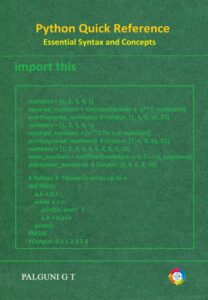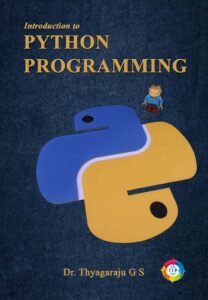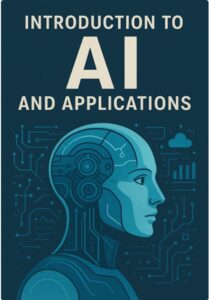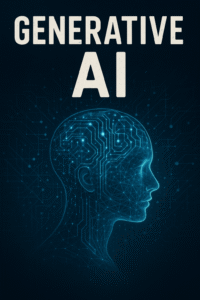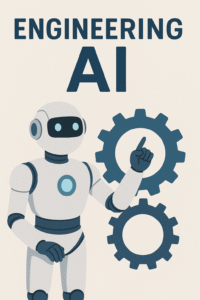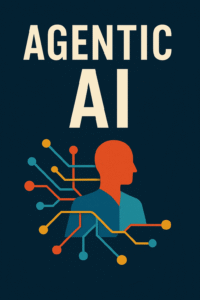Contents
- Artificial Intelligence : Essential Concepts and Algorithms
- Machine Learning : Essential Concepts and Algorithms
- Data Science : Essential Concepts and Algorithms
- Introduction to Artificial Intelligence and Machine Learning
- Understanding the History and Evolution of AI and ML
- Real-world Applications of AI and ML Algorithms
- Introduction to Machine Learning
- Foundations of Machine Learning :
- Data, Datasets, and Data Preprocessing
- Supervised, Unsupervised, and Reinforcement Learning
- Regression Algorithms
- Linear Regression
- Polynomial Regression
- Ridge Regression
- Lasso Regression
- Elastic Net Regression
- Support Vector Regression
- Classification Algorithms
- Logistic Regression
- Decision Trees
- Random Forests
- Support Vector Machines (SVMs)
- Naive Bayes
- K-Nearest Neighbors (KNN):
- Clustering Algorithms
- K-Means
- Hierarchical Clustering
- Density-Based Spatial Clustering of Applications with Noise (DBSCAN)
- Gaussian Mixture Models (GMMs)
- Spectral Clustering:
- Fuzzy C-Means
- Association Rule Learning Algorithms
- Apriori
- FP-Growth
- ECLAT
- CARMA (Clustering and Association Rule Mining Algorithm):
- RuleFit
- Sequential Pattern Mining
- Dimensionality Reduction Algorithms
- Principal Component Analysis (PCA)
- Linear Discriminant Analysis (LDA)
- t-SNE (t-Distributed Stochastic Neighbor Embedding)
- Isomap (Isometric Mapping):
- Non-negative Matrix Factorization (NMF)
- Autoencoders
- Ensemble Learning Methods
- Bagging:
- Boosting:
- Random Forest
- AdaBoost:
- Gradient Boosting
- Stacking
- Deep Learning Algorithms
- Convolutional Neural Networks (CNNs)
- Recurrent Neural Networks (RNNs)
- Long Short-Term Memory (LSTM) Networks
- Generative Adversarial Networks (GANs):
- Deep Reinforcement Learning:
- Deep Belief Networks (DBNs)
- Transformer Networks
- Self-Organizing Maps (SOMs)
- Capsule Networks
- Radical Basis Function Networks (RBFNs)
- Reinforcement Learning Algorithms
- Q-Learning
- SARSA
- Deep Q-Networks (DQNs)
- Policy Gradient Methods
- Actor-Critic Methods:
- Monte Carlo Methods
- Natural Language Processing (NLP) Algorithms
- Tokenization and Text Preprocessing
- Named Entity Recognition (NER)
- Part-of-Speech Tagging (POS)
- Bag-of-Words and TF-IDF
- Word Embeddings (Word2Vec, GloVe)
- Sentiment Analysis
- Sequence-to-Sequence Models
- Recurrent Neural Networks (RNNs)
- Long Short-Term Memory (LSTM) Networks
- Transformer Models (e.g., BERT, GPT)
- Explainable AI and Interpretability
- Importance of Explainability in AI and ML
- Techniques for Model Interpretability
- LIME (Local Interpretable Model-agnostic Explanations)
- SHAP (SHapley Additive exPlanations)
- Hyperparameter Tuning and Model Evaluation
- Cross-Validation
- Grid Search and Random Search
- Model Performance Metrics
- Bias-Variance Tradeoff
- Anomaly Detection Algorithms:
- One-Class SVM
- Isolation Forest
- Local Outlier Factor (LOF)
- Hybrid Algorithms:
- Neuro-Fuzzy Systems
- Fuzzy Logic and Fuzzy Inference Systems
- Search and Optimization Algorithms:
- Hill Climbing
- Simulated Annealing
- Genetic Algorithms (GA)
- Ant Colony Optimization (ACO)
- Particle Swarm Optimization (PSO)
- Future Trends in AI and ML
- Reinforcement Learning Advancements
- Quantum Machine Learning
- AI in Healthcare
- AI in Autonomous Vehicles
- Ethical AI Governance
- Conclusion
- Recapitulation of Key Concepts
- Journey Towards Mastering AI and ML Algorithms
20. Bibliography


